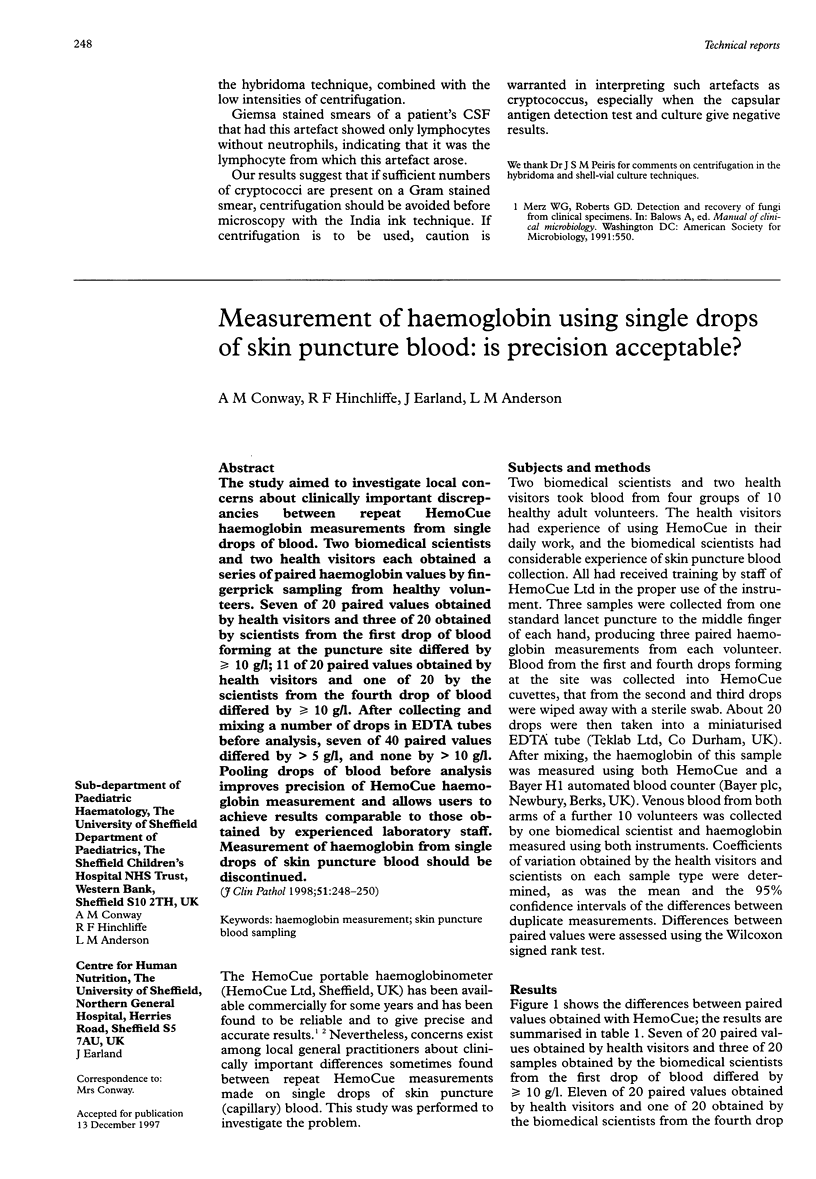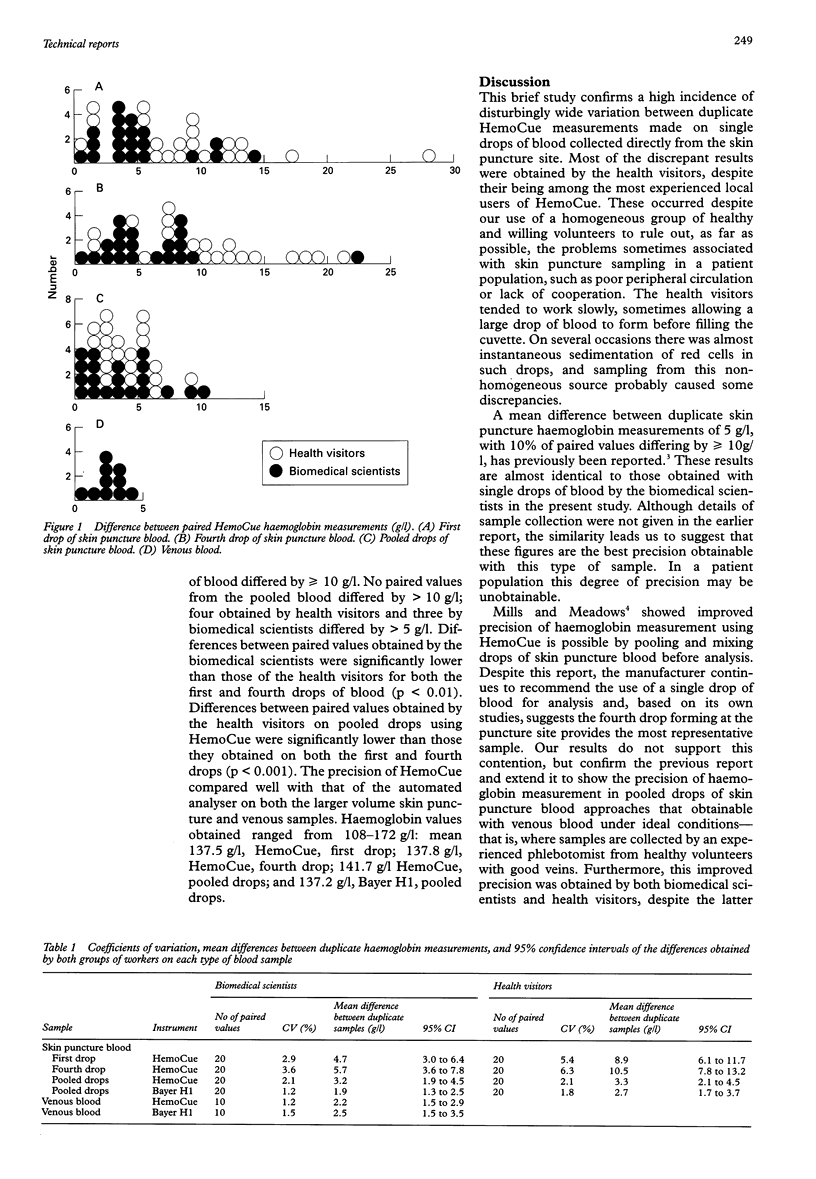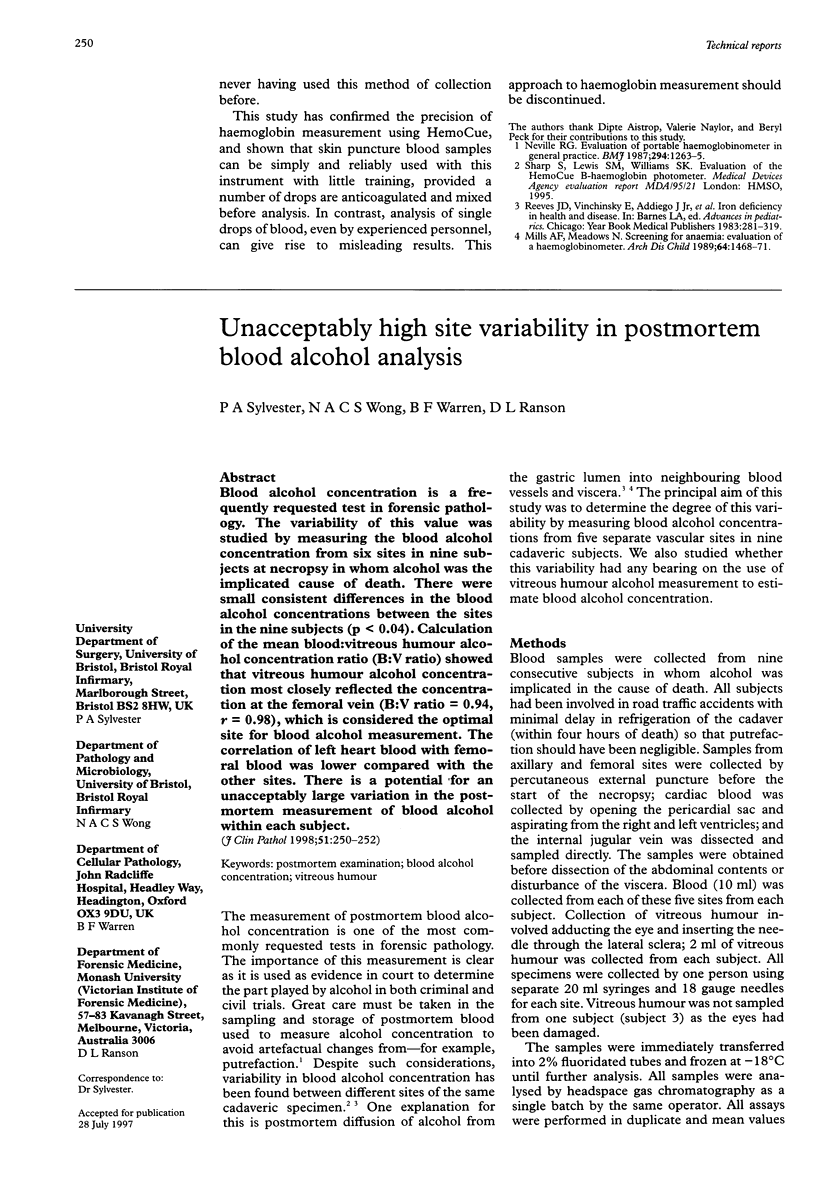Abstract
The study aimed to investigate local concerns about clinically important discrepancies between repeat HemoCue haemoglobin measurements from single drops of blood. Two biomedical scientists and two health visitors each obtained a series of paired haemoglobin values by fingerprick sampling from healthy volunteers. Seven of 20 paired values obtained by health visitors and three of 20 obtained by scientists from the first drop of blood forming at the puncture site differed by > or = 10 g/l; 11 of 20 paired values obtained by health visitors and one of 20 by the scientists from the fourth drop of blood differed by > or = 10 g/l. After collecting and mixing a number of drops in EDTA tubes before analysis, seven of 40 paired values differed by > 5 g/l, and none by > 10 g/l. Pooling drops of blood before analysis improves precision of HemoCue haemoglobin measurement and allows users to achieve results comparable to those obtained by experienced laboratory staff. Measurement of haemoglobin from single drops of skin puncture blood should be discontinued.
Full text
PDF


Selected References
These references are in PubMed. This may not be the complete list of references from this article.
- Mills A. F., Meadows N. Screening for anaemia: evaluation of a haemoglobinometer. Arch Dis Child. 1989 Oct;64(10):1468–1471. doi: 10.1136/adc.64.10.1468. [DOI] [PMC free article] [PubMed] [Google Scholar]
- Neville R. G. Evaluation of portable haemoglobinometer in general practice. Br Med J (Clin Res Ed) 1987 May 16;294(6582):1263–1265. doi: 10.1136/bmj.294.6582.1263. [DOI] [PMC free article] [PubMed] [Google Scholar]
- Reeves J. D., Vichinsky E., Addiego J., Jr, Lubin B. H. Iron deficiency in health and disease. Adv Pediatr. 1983;30:281–320. [PubMed] [Google Scholar]


